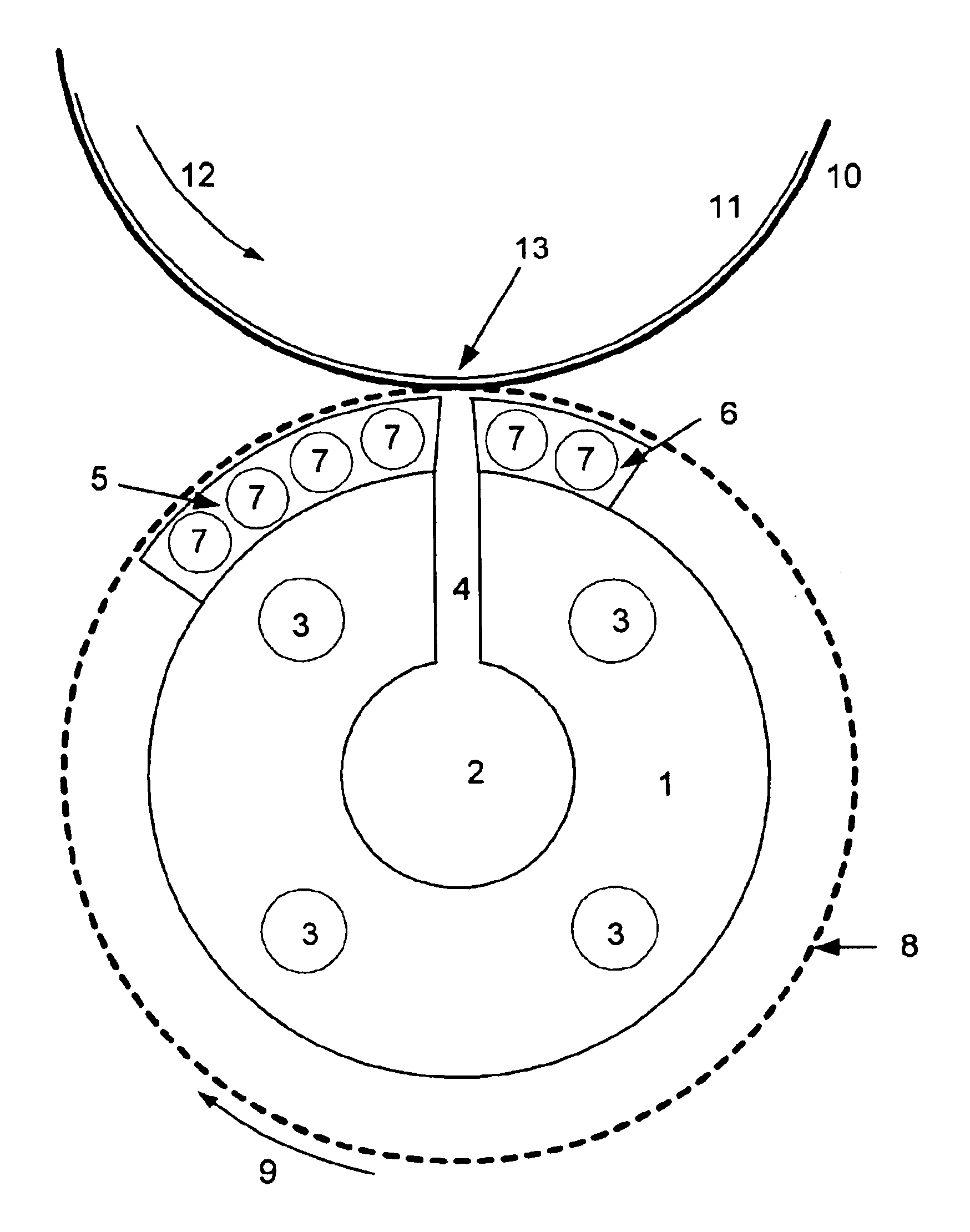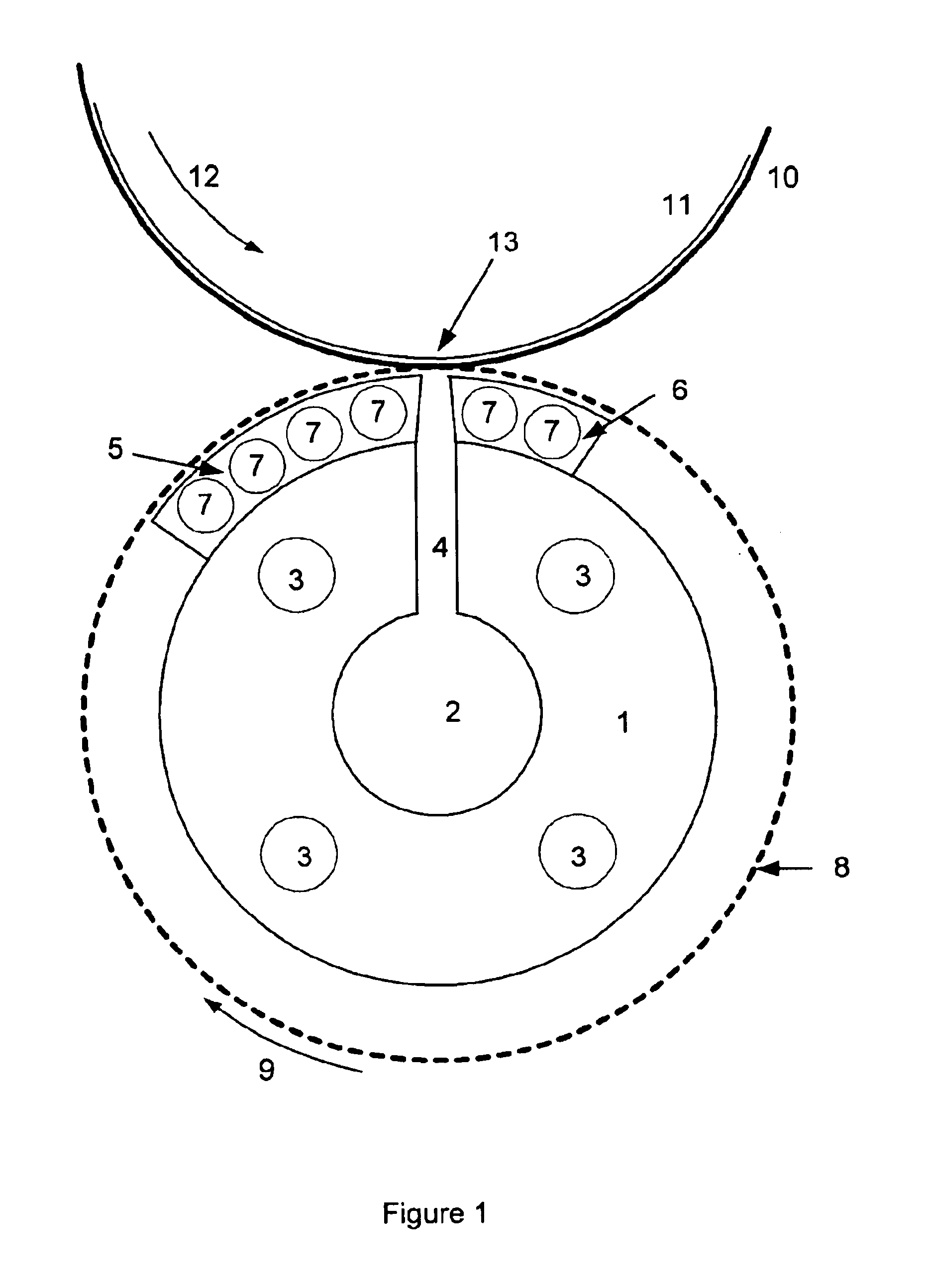Method for applying liquid, pasty or plastic substances to a substrate
a technology of plastic substances and substrates, applied in the direction of liquid/solution decomposition chemical coating, solid/suspension decomposition chemical coating, superimposed coating process, etc., can solve the problems of tight limits of this method, medical coatings where skin contact will occur, and the strength of supporting materials should exhibit sufficient strength and limited tendency to stretch, etc., to achieve good water vapour and air permeability, enhance the plasticity of the adhesive mass, and high tack
- Summary
- Abstract
- Description
- Claims
- Application Information
AI Technical Summary
Benefits of technology
Problems solved by technology
Method used
Image
Examples
example
[0091]In a rotary extrusion machine with 1 m width of coating, which is equipped with the usual devices for guiding an endless belt such as roll-off, roll-on path edge controls and path tension measuring systems, and whose coating part comprises a rotating round screen, a nozzle within the screen, and a counter-pressure roller with which the nozzle is pressed to the coating nozzle, a thermoplastic adhesive is applied to a paper strip.
Process temperature in feed system and nozzle140°C.Process temperature around the screen holes150°C.Surface weight of the paper strip65g / m2Screen40mesh,hole size0.3 mm.
[0092]The heater elements are arranged as follows:[0093]Arc segment at nozzle before extrusion opening:
Arc segment angle60 degreesArc segment radiusScreen radius to 0.1 mm less than screen radiusHeating of arc segmentelectric, 12 kW[0094]Arc segment at nozzle after extrusion opening:
Arc segment angle60 degreesArc segment radiusScreen radius to 0.03 mm less than screenradiusHeating of arc ...
PUM
| Property | Measurement | Unit |
|---|---|---|
| angle | aaaaa | aaaaa |
| angle | aaaaa | aaaaa |
| angle | aaaaa | aaaaa |
Abstract
Description
Claims
Application Information
 Login to View More
Login to View More - R&D
- Intellectual Property
- Life Sciences
- Materials
- Tech Scout
- Unparalleled Data Quality
- Higher Quality Content
- 60% Fewer Hallucinations
Browse by: Latest US Patents, China's latest patents, Technical Efficacy Thesaurus, Application Domain, Technology Topic, Popular Technical Reports.
© 2025 PatSnap. All rights reserved.Legal|Privacy policy|Modern Slavery Act Transparency Statement|Sitemap|About US| Contact US: help@patsnap.com


